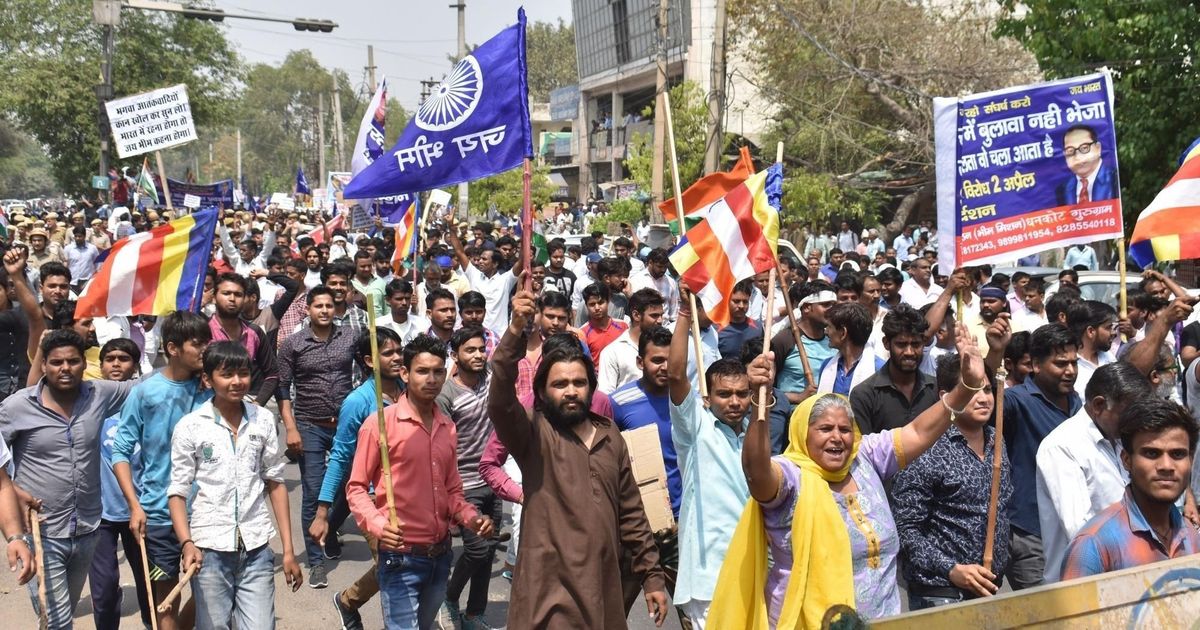The nine month old crisis in Manipur has had alarming consequences and fallout in both human and material terms. At the centre of the conflict, is the issue of status of Scheduled Tribe to the Meitei community. This article explains the process of how a tribe of community is given the status of Scheduled Tribe or Scheduled Caste under law.
The Presidential Orders regarding the Scheduled Castes and Scheduled Tribes are the Constitution (Scheduled Castes) Order, 1950 and the Constitution (Scheduled Tribes) Order, 1950. These orders were issued by the President of India under Articles 341 and 342 of the Constitution of India, which define who would be Scheduled Castes and Scheduled Tribes with respect to any State or Union Territory.
According to Article 341, the President may, with respect to any State or Union Territory, specify the castes, races or tribes or parts of or groups within castes, races or tribes which shall be deemed to be Scheduled Castes in relation to that State or Union Territory. Similarly, according to Article 342, the President may specify the tribes or tribal communities or parts of or groups within tribes or tribal communities which shall be deemed to be Scheduled Tribes in relation to that State or Union Territory. The Parliament will have to pass a law, affirming the modification.
Commencing at the State or Union Territory level, the relevant government or administration initiates the process to request the addition or removal of a specific community from the SC or ST list. The ultimate authority for the decision resides with the President’s office, which issues a notification outlining the modifications using the powers vested in it from Articles 341 and 342.
For the inclusion or exclusion of any community in the Scheduled Tribes or Scheduled Castes list to take effect, it necessitates the President’s assent to a Bill amending the Constitution (Scheduled Castes) Order, 1950, and the Constitution (Scheduled Tribes) Order, 1950. The approval of the Bill is contingent upon its successful passage through both the Lok Sabha and Rajya Sabha.
The state governments can recommend –either for the inclusion or deletion—based on their discretion or based on the committees that they have constituted. Those cases for inclusion or deletion, that are favoured by the state governments and the Registrar General of India will then be referred to the National Commission for Scheduled Castes (NCSC) or National Commission for Scheduled Tribes (NCST) for their opinion. There could be suggestions to the Commissions by the government to conduct further studies on the proposal using different means such as public hearings, or to make priority those cases on which a court has given specific directive in etc.
If all the three entities i.e., the Commission, the RGI and the state government give their nod of approval, an amendment would be proposed at the Cabinet level. If the Commission has not given its nod to the proposal, either to add or delete a community from the schedule, it would be rejected by the Ministry of Social Justice and Empowerment. If the Registrar General rejects the proposal, the Social Justice ministry or the Ministry of Tribal affairs sends it back to the state to re-examine the proposal, justify their recommendations in the light of comments of RGI; and if the RGI does not agree to the proposal too, the ministry may consider the rejection of proposal.
The RGI’s role
In an RTI query, it was found that for criteria to designate a community as Scheduled Tribe (ST), was being taken applying set guidelines from a 1965 committee. The criteria for Scheduled Tribe, as set out in the committee are indications of primitive traits, distinctive culture, geographical isolation, shyness of contact with the community at large, and backwardness. These criteria have been termed dogmatic and rigid by an internal government committee in 2017. These old criteria, combined with a lack of data right now due to the lack of Census is worrisome.
With respect to Scheduled Castes (SCs), the Constitution (Scheduled Castes) Order of 1950 allows only Hindus as SCs, and Hindus here includes Sikhs and Buddhists after amendments in 1956 and 1990 respectively. This mean that Dalit Christians and Dalit Muslims do not get to be included in the list and the RGI has been reluctant to expand the order of 1950 beyond Hindus and Sikhs. Although Caste Inequalities exists in Indian Christian and Indian Muslim communities, they continue to be outside the ambit of the SC and ST status.
(The author is a researcher with the organisation)
Related:
Jharkhand HC: Case against BJP leader for abusing driver under SC/ST Act quashed
Exclusion of SC/ST/OBC from EWS is valid for keeping balance of equality: SC bench in majority

